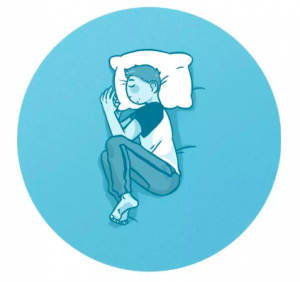
If one leg is shorter than the other, the condition is known as leg length discrepancy (LLD). However, the difference in length can range from a fraction of an inch to several inches. The greater the difference, the more likely it is to experience problems with posture and gait.
Having one leg longer or shorter than the other is a relatively common condition, and some studies say that 40-70% suffer from leg length discrepancy.
This article takes a detailed look at why one leg is shorter than the other. We also provided detailed information on the symptoms, diagnosis, and treatment options for leg length discrepancy.
Causes of leg length discrepancy
LLD can be classified into two: Functional and structural. Both classes have different causes.
Functional LLD
In functional LLD, there is a torsion or pelvic-rotation – often referred to as a sacroiliac joint dysfunction – which causes only one leg to function as though it is shorter than the other. In this medical condition, a chiropractor would have to treat and return the pelvis to the normal position before measuring the leg length difference. Functional LLD is a result of an issue in the following body parts: ankle, pelvis, foot, ankle, and hip.
It is essential to know that functional LLD in adults can also result from arthritis. While in children, it can occur during childbirth and then distort their hip alignment. Other causes of functional LLD include neuromuscular conditions, which can also alter posture and alignment. There are instances where exercises can lead to functional LLD; that’s if an athlete trains in a way that causes weakness and muscle imbalance.
Structural LLD
In structural discrepancy, a person’s thigh bone or shin bone is shorter in one leg than in the other. This condition is a hereditary circumstance in children.
Some causes of structural discrepancy are:
- Bone diseases: Bone diseases are one of the leading causes of structural LLD. Osteomyelitis is an example, and it causes damages to the growth plate, resulting in leg length discrepancy.
- Bone tumors: Bone tumors such as Wilms’ tumor (commonly found in children) and Osteosarcoma can affect bone growth and lead to LLD.
- Bone Injuries: Bone injuries can also lead to LLD. A bone fracture healing can also cause the bone to grow slower or faster than the other bone on the body’s opposite side.
- Growth plate injuries: Growth plates are areas of new bone growth in children and teenagers. They are made up of cartilages and situated near the end of long bones. Most times, a growth plate injury can trigger the bone to grow faster or slower.
- Juvenile arthritis: Juvenile arthritis is an autoimmune disease common in children. This disease causes inflammation of the tissues in the joints; it also causes overgrowth in the bone.
Symptoms of leg length discrepancy
The primary symptom of leg length discrepancy is having one leg shorter than the other. A study in 2017 revealed that LLD as small as 2cm could result in an altered position of the spine and pelvis.
Additional symptoms of LLDs include the following:
- Weakness
- Gait problems
- Back, hip, and knee pain
LLD can also affect the overall quality of a person’s life. People who suspect they have LLD shouldn’t hesitate to seek professional help. A chiropractor would perform proper diagnosis and give you adequate treatment. However, while waiting for an appointment, you can try the following at home to see if there is a possibility of LLD.
- Remove your socks and shoes.
- Lie down on the floor and keep your legs together.
- Ask a friend to place his/her palm on your hip bones so that they have each hand on the hip.
- Ask your friend to gently move your hips from side to side for about a minute to help loosen up tight muscles.
- Also, ask your friend to help check the alignment of your ankle bones.
It is also essential to know that if your ankles aren’t aligned, it could indicate you have LLD. Therefore, it is crucial to contact a chiropractor to see if you have LLD.
Treating leg length discrepancy
Treating LLD solely depends on the type involved.
Treating functional leg length discrepancy
Proper manual therapy techniques and therapeutic exercise are required in order to treat LLD. This treatment will help normalize the pelvis. Hence, the treatment needed to hold the pelvis in a symmetrical position differs in each patient based on the biomechanical dysfunctions in their lower back, pelvis, hip, knee, and foot or ankle.
Exercises have been proven to correct some functional LLD. Hence, it is highly crucial to use the right stretching and strengthening techniques. Ensure you exercise the side of the body to correct functional LLD.
It is essential to seek the help of a chiropractor to avoid escalating the issue. A chiropractor can help identify areas of imbalance and recommend the right exercises.
Treating structural leg length discrepancy
Structural LLD can be treated with a heel lift in the shorter leg’s shoe if the discrepancy involved is about 5mm or higher. In many cases, surgical intervention may be needed to either shorten the leg or lengthen it. An essential part of any surgical intervention to treat LLD is through physical therapy. Physical therapy helps to stretch the muscles and maintains flexibility, which is vital for the healing process.
Final Words
Having one leg shorter than the other is a common occurrence. Leg length discrepancy may be functional or structural. Minor LLD often causes no issues and symptoms. Hence, moderate to severe LLD may result in problems in your posture and walking, resulting in the hip, knee, and back pain.
However, if you have pains in your lower back and possibly LLD, contact Custom Chiropractor for an evaluation. Our professional chiropractors will determine the type of LLD and the type of treatment you need to be well again. Give us a call at (408) 248-8700 to schedule an appointment.





